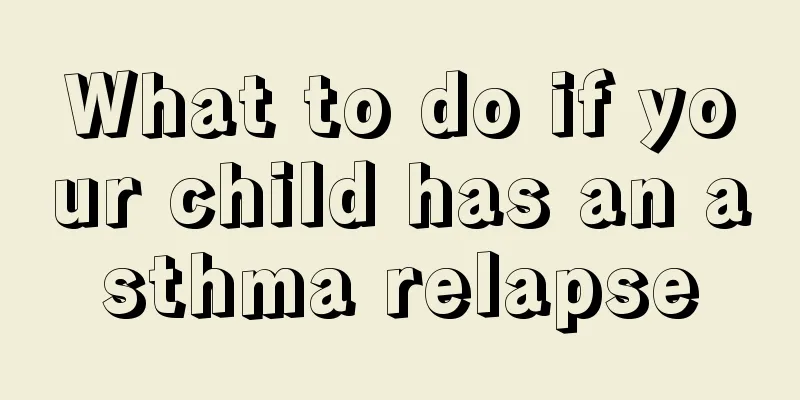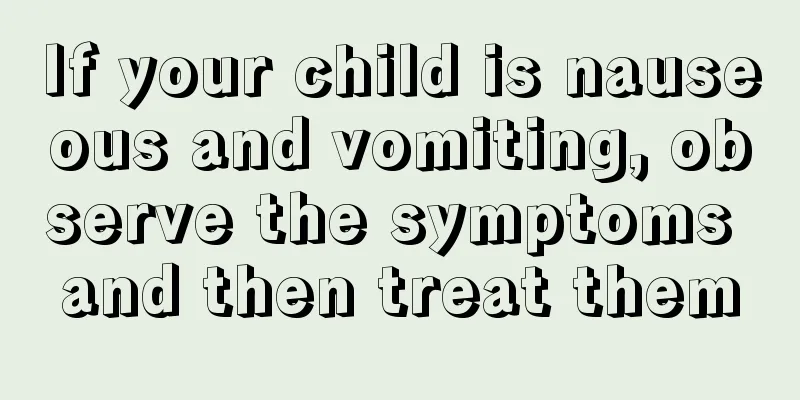What to do if your child has an asthma relapse

|
In recent years, new concepts have emerged in the pathogenesis of asthma. It has been clearly determined that asthma is caused by allergic inflammation of the airways, which in turn causes airway hyperresponsiveness. The two interact to form a vicious cycle. In fact, asthma is a common disease of the respiratory system. Many people still experience recurrent attacks even after being cured. So why does asthma attacks keep coming back? How should asthma patients eat? The most important substance in the formation of acute allergic inflammation is leukotrienes. In the formation of chronic allergic inflammation, in addition to the participation of inflammatory cell chemokines, which aggravate airway allergic inflammatory lesions, it has recently been believed that the most important substance in the formation of chronic allergic inflammation is cytokines. It has been found that 25 out of 50 cytokines are involved in chronic allergic inflammation, among which interleukins, which are closely related to the survival of mast cells and the differentiation, survival and activation of eosinophils, play a key role. This not only makes the airway allergic inflammation more profound and complicated, but also makes it more persistent, making the airway stenosis and deformity caused by chronic allergic inflammation irreversible changes. Because chronic airway inflammation persists, the resulting airway hyperresponsiveness is difficult to eliminate, forming a potential factor for the recurrence of refractory asthma. Therefore, asthma can be triggered by mild stimulation in daily life that has no effect on normal people, such as upper respiratory tract viral infection (cold), inhalation of certain allergens, smoke, odors and mental factors in the air. So, how to prevent asthma attacks? (1) Early and reasonable use of drugs that eliminate airway allergic inflammation (anti-inflammatory) drugs. The order of their anti-inflammatory effects is inhaled corticosteroids, sodium cromoglycate and ketotifen, which have varying degrees of effectiveness in preventing airway allergic inflammatory reactions. Especially for inhaled corticosteroids, scholars at home and abroad unanimously agree that it has the strongest anti-inflammatory effect and the least side effects. It is listed as the first choice drug for preventing and treating recurrent asthma attacks. It has been used abroad for more than 20 years and we have also used it for more than 10 years. In recent years, sodium cromoglycate has been re-recommended as the drug of choice for preventing childhood asthma, but its anti-inflammatory effect is not as good as inhaled corticosteroids, and it takes a long time to take effect, and may even take 4-8 weeks of use to be effective. At present, sodium cromoglycate quantitative aerosol (suspension type, MDI produced by Shanghai Xinyi and Beijing Ji'ai Pharmaceutical Factory) is launched in China. Inhaled corticosteroids can be used first for treatment, and then sodium cromoglycate or ketotifen can be used for maintenance after the condition stabilizes. (2) Avoid various allergens and irritants, such as no smoking, a balance between work and rest, early prevention and treatment of respiratory viral infections, appropriate physical exercise, and the use of various immunomodulators to improve physical fitness. If allergic reactions to certain allergens are confirmed through allergen testing, people should try to avoid them. (3) Prevent and treat coexisting allergic rhinitis: Allergic rhinitis is the outpost of asthma. Both diseases are respiratory allergic diseases and they often coexist. Chlorhexidine propionate nasal spray or fluticasone nasal spray should be used as early as possible for prevention and treatment. Finally, the editor recommends that asthma patients should have a light diet and provide sufficient protein and iron. You should eat more lean meat, soy milk, etc. in your diet. It is advisable to eat more fresh vegetables and fruits. Fresh vegetables can not only supplement various vitamins and inorganic salts, but fruit foods can not only eliminate phlegm and relieve cough, but also strengthen the spleen, kidney and lungs. |
<<: What to do if your child has a concussion
>>: How to treat a child's cold and cough
Recommend
What should I do if my child doesn’t like reading?
We have known since childhood that books are the ...
2-year-old baby has sore throat and fever
The baby is still very young and has very low imm...
Where are the acupuncture points for reducing fever in children?
Western medicine treatment methods are simple and...
How long does it take for a baby's arm to recover after being dislocated? How many days does it take for a baby's arm to recover after being dislocated?
If the baby's arm is accidentally dislocated,...
How to correct children's pigeon feet
Parents are usually overly anxious about their ch...
What to do if your newborn spits up while lying down
Spitting up is a common symptom in newborns. This...
The order of teething in children is their own.
Generally, most babies will have their deciduous ...
How to attract students' attention?
Students' attention is crucial in learning. C...
Baby's nose bleeds in the middle of the night
If your baby has a nose bleed in the middle of th...
What should we pay attention to when children have low white blood cell count?
The current social environment and some drugs alw...
What to do if children have too much body hair
Excessive body hair is very common in adults, but...
Children's hives
Compared with adults, children are not only very ...
What are the physical methods to reduce fever in children?
Infant fever is a relatively common disease. If t...
Why do children have swollen eyes after waking up?
People should understand that babies' swollen...
How to treat papular urticaria in children? Tell you the most effective method
Infants and young children are prone to papular u...









